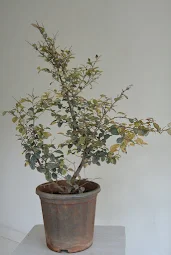Main characters of the plant
Chinese fringe flower is a ornamental shrub grows up to 5to 6 feet. It can be pruned and can be given a shape. During the sunlight a chemical called anthocyanin is produced that gives a pleasant purple color to the leaves. The flowers of this plant will be hanging beautifully with pleasant pinkish purple color which highlights the plant when its in full bloom.
Sunlight
This plant grows well in full sunlight ,but the afternoon sunlight burns the leaves if the temperatures high and more than 35 degree centigrade, it prefers afternoon shade. Other wise plant grows well in full sunlight. Some of Bonsai artists prefers as a indoor Bonsai by placing the plant on western direction window where you get full proper sunlight. If there no proper sunlight color of the leaves of the plant changes they wont be having that stunning bright purple colour,
Soil
Loropetalum need good drainage ,organic soil for its proper growth. Fringe flowers likes acidic soil. To make soil acidic at least one third quantity peat moss to be added to your Bonsai soil. This plant needs lots of moisture in the soil , so peat moss helps to keep the moisture level constant. here i will share my Bonsai soil ingredients .My Bonsai soil consist of three parts manure one part of garden soil, one part pumice stones of 1 to 2 mm . This is normally used for all my medium size Bonsai plants.
Then for the plants like acidic soil loving plants I will add two parts of peat moss to Bonsai soil and mix them well. This is a good soil for loropetalum.
Watering
The main and important point is while growing Fringe flowers the soil should be moist all the time. During summer months water the plant morning and evening, If the temperature is high keep the plant in shady place and give a shower to the plant.
Care, Cutting and Pruning
This plant responds well to cutting and pruning. perfect time for cutting is early spring. It starts flowering during spring. Usually the plants flowers two to three times a year , before winter, spring and during summer season.
once the flowering season is over cut and prune the branches and give a shape to the plant and make it ready for next flowering season by providing it with organic fertilizers and slow releasing fertilizes. This plant can be grown from branches also . that is the advantage we can make a branch cutting to rooting during late summer before rainy season.
The main important thing to keep Loropetalum healthy is give proper sunlight. too much afternoon sunlight or too much shade makes the plant to loose its bright purple color of leaves.
Then the plant looses its vigor and becomes weak , then there are chances of dyeing back of the plant. Too much sunlight burns leaves and there wont be proper flowering.
Take care of these then your Loropetalum will be a beautiful Bonsai of your collection.
Demonstration of Loropetallum plant in to a Bonsai tree at Sinhgad College Students Council































